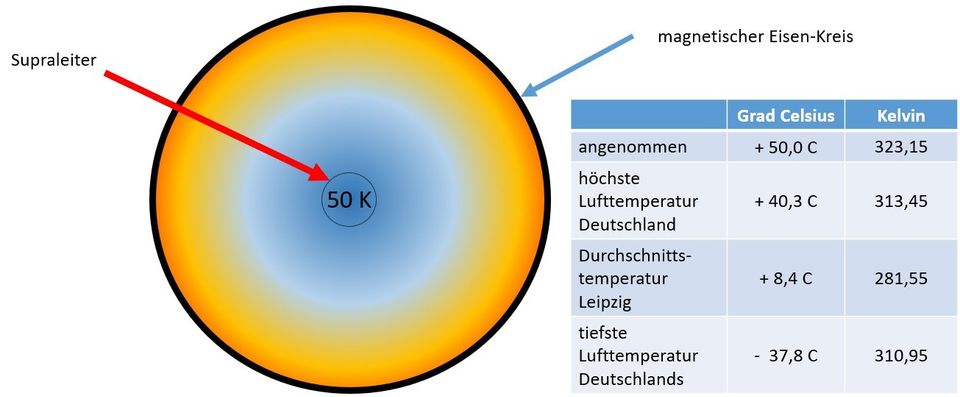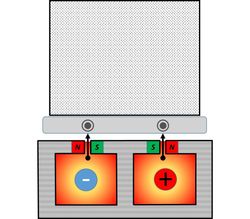
The concept of PowerMaglev requires the use of superconductors.
For the operation of superconductors lowest possible temperatures are required.
The provision and operation of the infrastructure is a key factor in cost-effectiveness.
There are sufficient solutions available on the market, which are able to provide appropriate temperatures.
In order to reduce the costs, a subproject is working on a solution called "vacuum-muff". A permanent vacuum in glass tubes should significantly interrupt the heat conduction. A disadvantage of this solution is that the glass tubes are made from a variety of individual tubes and that the significant interruption of the heat conduction does not take place at the joints.
Under idealized conditions, the amount of energy to be dissipated is reduced to less than 6 kW. In a version without vacuum muff, the amount of energy to be dissipated is approx. 50 kW.



Vakuum-Muff
the required cooling capacity has a significant influence on the efficiency of the overall system (the most important requirement, however, is the usability of the special properties of superconducting materials)
Challenge
- The use of the material property "superconductivity" is currently possible only with a lowering of the temperature
- By cooling units, the temperature reduction is achieved
- To minimize the cooling power decoupling between ambient temperature and the superconductor is required
- In addition to the use of insulating materials with a low heat conduction vacuum tubes are used to interrupt the heat conduction
- The heat radiation is also available in a vacuum, a complete decoupling is not possible
- The strength of a magnetic field has an influence on the material property "superconductivity", whereby there is a more or less pronounced dependence on the temperature of different materials, therefore effective cooling is also important for the function itself
- The power at the research reactor CERN is approximately 1.0 MW per kilometer for cooling (Note: this high power is, however, also due to the very low operating temperature of the superconductors used)

aim
- To reduce the power to cool 1 km route in an economic context to a minimum
- To determine the desired optimum between cooling effort / maximum energy storage amount / secondary usability
- make an assessment of the temporal behavior of the stator temperature under the focus "renewable energy"






